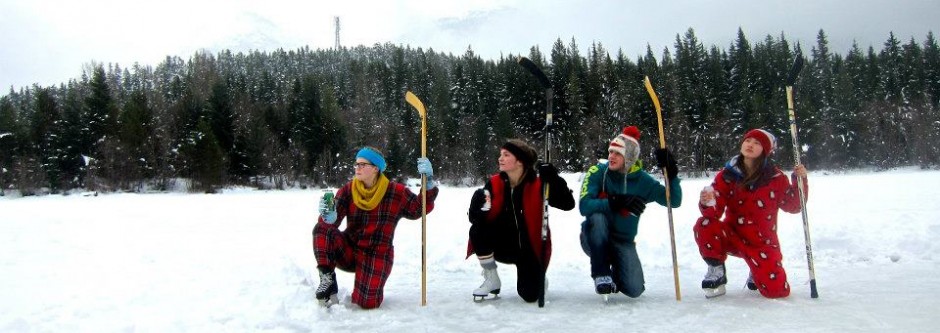For this blog post I have been assigned the pages 56-69. As a summary of these pages, we are told of the second worst mistake Lionel has ever made, in which he give a talk in Salt Lake City and finds himself arrested for joining the American Indian Movement (AIM), which he had no intention of being apart of. We also learn that Alberta wants a child, but fails to go through with her preferred method, option three, which would be through a stranger in a bar. We are also return to Coyote, GOD, First Woman, and Ahdamn in the garden, where GOD gets possessive of his fruit and orders the others out.
I will attempt to go through these pages systematically, addressing the characters and events as they appear, however I quickly realised that there are far too many references, people, and connecting historical events to capture them all in one blog post. I will do my best to cover the ones I understand to be the most important.
Hotel Utah
The hotel that Lionel says in during his time in Salt Lake City has a deeper history than your run of the mill hotel. The primary stockholder of Hotel Utah was the Church of Jesus Christ of the Latter-Day Saints (LDS). The site is now a memorial for the founder of the church, Joseph Smith Jr.
George Morningstar / George Armstrong Custer
Latisha’s husband is first mentioned on pages 56-57, when Lionel reminds his Aunt that George “used to beat the hell out of [Latisha]” (page 57). George Morningstar is character derived from the famed Civil War figure George Armstrong Custer, who lead 200 of his men in the Battle of Little Bighorn. He is mentioned on 61 from a painting that depicts this battle displayed in the lobby of Hotel Utah.

“At the far end of the lobby, under the decorative pilasters, cornices, and coves, was a painting of the Battle of the Little Bighorn. George Armstrong Custer stood at the center of the drama, looking splendid in a fringed leather jacket, matching gloves, and black riding boots.” (page 61)
A 1984 non-fiction book titled “Son the of Morning Star” written by Even S. Connell about George Armstrong Custer is likely where King got the name for his character George Morningstar; a character created to depict the extreme American patriotism mirrored in his real life counterpart. The abuse of his Native American wife, Latisha, is a reflection of the abuse towards Native Americans and the mass genocide they faced at the hands of George Armstrong Custer and the colonization of North America.
Duncan Scott
Duncan Scott is Lionel’s boss at the Department of Indian Affairs, the D.I.A, or what we now know as the Department of Aboriginal Affairs and Northern Development Canada. Duncan Campbell Scott was the real head of the D.I.A from 1913-1932, implementing policies that would coincide with the government’s position on assimilation.
“I want to get rid of the Indian problem. I do not think as a matter of fact, that the country ought to continuously protect a class of people who are able to stand alone… Our objective is to continue until there is not a single Indian in Canada that has not been absorbed into the body politic and there is no Indian question, and no Indian Department, that is the whole object of this Bill.” – Duncan Campbell Scott (as quoted from Wikipedia)
Under Scott’s direction it was made mandatory for Aboriginal children to attend residential schools as he believed that removing the child from the home would allow for an easier transition into western society. Scott was also known for his poetry, commonly placed with the poets of the Confederation. However, his poetry reflects his attitudes towards the Native population, where “Scott presents his Native subjects as noble, but doomed” (The Canadian Encyclopedia).
Tom and Gerry
Tom and Gerry are the two Hotel Utah employees who talk to Lionel after he returns from his sudden arrest. Taken from the Warner Brothers characters Tom and Jerry, King is perhaps trying to show the comic nature of the way Lionel is treated and how the situation is handled. The whole affair seems to ridiculous to be real, so by framing the people in charge off of cartoon characters, King highlights this childish behaviour. It should also be noted that “Tom and Jerry” has received criticism for its depiction of African Americans, as seen in the character of Mammy Two Shoes. Perhaps King is acknowledging this as well, referencing the stereotypes used in the cartoon show to underline the racism and stereotypes used against Lionel.
Chip and Dale
Similar to Tom and Gerry, the two police officers, Chip and Dale, reference a cartoon duo by Walt Disney Productions. The other reference Chip and Dale could possibly make is to the male erotic dance troupe Chippendales. Other than provoking the comical image of greased up, muscular dancers attempting to maintain law and order, I am not sure if this is what King meant for us to infer in these characters.
Shagganappi
The bar that Alberta attempts to find her “donor” is named after the Cree word “Shaganappi” meaning a “thongs, straps, or lacing made of rawhide” (Enacademic): an appropriate name for bar in which to meet a potential one night stand. The Shagganappi is also a book of stories written by Pauline Johnson, a half Mohawk, half English performer and writer in the late 19th century. Like King himself, Johnson drew influences from both her European and Native origins when creating her works.
Work Cited
“Aboriginal Affairs and Northern Development Canada.” Government of Canada. 18 March 2015. Web. 18 March 2015
“Battle of Little Bighorn”. Painting and Frame. Image. 18 March 2015
“Duncan Campbell Scott”. The Canadian Encyclopedia. Historical Canada. Web. 18 March 2015.
“Duncan Campbell Scott”. Wikipedia: The Free Encyclopedia. Wikimedia Foundation, Inc. 2 March 2015. Web. 18 March 2015.
“George Armstrong Custer”. Bio. A&E Television Networks. Web. 18 March 2015.
“Joseph Smith Memorial Building”. Wikipedia: The Free Encyclopedia. Wikimedia Foundation, Inc. 24 Feb 2015. Web. 18 March 2015.
“Pauline Johnson”. Wikipedia: The Free Encyclopedia. Wikimedia Foundation, Inc. 14 March 2015. Web. 18 March 2015.
“Shaganappi”. Enacademic: Academic Dictionaries and Encyclopedias. Web. 18 March 2015.
“Son of the Morning Star”. Wikipedia: The Free Encyclopedia. Wikimedia Foundation, Inc. 14 April 2014. Web. 18 March 2015.
“Tom and Jerry – Bonus – Introduction by Whoopi Goldberg”. Youtube. 5 April 2013. Web. Video. 18 March 2015




